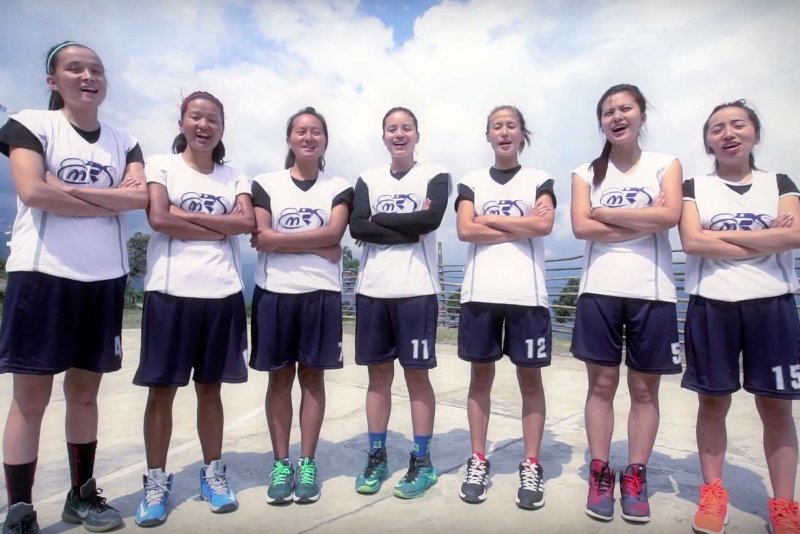Tucked away in a corner of Sikkim, one of India’s most picturesque states is the tiny village of Gangyap, which translated to English means “Behind the Hills”. Otherwise gone unnoticed, Gangyap is making headlines and creating news for its 16 member all woman basketball team, which is clinching trophies and gathering accolades across the country.
The team captain, Nima Doma Bhutia, plays alongside fifteen other women, all of whom are students of Eklavya Model Residential School (EMRS) for tribal children, which is funded by the Ministry of Tribal Affairs, Government of India. The school, headed by the players’ coach Principal Sidharth Yonzone, is the first of its kind to provide quality education for poor tribal children from Sikkim’s remote areas. Typically, the students belong to economically deprived families where gathering wood, milking the cows and cutting the fodder for livestock feeding consume most of their days’ work.
Basketball has given them a new lease of life, and the girls made their own basketball court from broken stone chips and cement. In 2011 and 2012, Nima Doma Bhutia clinched the Most Valuable Player Award and the EMRS Gangyap team won the National Championships in 2011 and 1st runner up award in 2012.


At Centre for Social Research, we have always been big supporters of women’s sports. Our strong belief is that encouraging women in sports is a very significant way of empowering them. Here, we would like to point out that the infrastructure and facilities provided to sportspersons must be bettered for us create many more successful sporting, male and female, world champions. As per a report published by the National University of Educational Planning and Administration, only 63 per cent of primary schools and 66 per cent of upper primary schools had playgrounds. If all schools, including secondary and senior secondary schools, are taken into account, only 60 per cent had playgrounds. Lack of proper training, poor infrastructure, neglecting sports in school curricula, and a culturally ingrained apathy and ignorance towards sportspersons, is stopping us from being a superpower, in more ways than one.
In such a climate, we applaud the efforts of not only the girls, but also of the Principal, whose initiative of bringing sports to the tribal girls. We hope to see the Girls of Gangyap reach great heights, and that more such efforts are taken up across the country.




